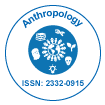
Anthropology
Open Access
ISSN: 2332-0915

ISSN: 2332-0915
Opinion Article - (2025)Volume 13, Issue 1
Forensic anthropology stands at the compelling intersection of science, justice, and human compassion. As a specialized subfield of physical anthropology, it plays a vital role in modern investigations, offering answers when silence, time, or trauma obscure the truth. The work of forensic anthropologists, while rooted in the scientific analysis of human remains, carries profound ethical and social implications.
Despite the inherently scientific nature of the discipline, forensic anthropology is not purely objective or devoid of emotional impact. The practitioners frequently work with the remains of people who have suffered violent, tragic, or unjust deaths. Whether examining the skeleton of a murder victim or analyzing remains from a mass grave, forensic anthropologists are exposed to human suffering in its starkest form. It is impossible to ignore the moral dimension of this work, which requires not only technical competence but also ethical sensitivity and emotional resilience. The commitment to truth, even in the face of horror, is one of the field’s most admirable qualities. One of the compelling strengths of forensic anthropology is its potential to give voice to those who have been silenced. In cases of war crimes, crimes against humanity, and systemic violence, the identification of victims becomes an act of resistance against erasure. It affirms the individuality of the deceased and challenges efforts to conceal atrocities. The exhumation and identification of victims from the Rwandan genocide, the Balkans conflict, and Latin American dictatorships illustrate the power of forensic anthropology to support truth and reconciliation processes. In such contexts, the anthropologist’s work extends beyond the laboratory, contributing to historical memory and social healing.
Moreover, forensic anthropology underscores the importance of interdisciplinary collaboration. Forensic cases often involve pathologists, law enforcement, archaeologists, odontologists, and geneticists. Each specialist contributes a piece to the puzzle, but the anthropologist brings a unique perspective rooted in human biology and cultural awareness. This ability to operate across disciplines enhances the robustness of investigations and ensures that the evidence is interpreted holistically. The integration of forensic anthropology with forensic DNA analysis, for example, has revolutionized identification efforts, allowing for confirmation of results and greater accuracy.
As forensic anthropology gains prominence, it is essential to address its limitations and challenges. One of the ongoing debates in the field involves issues of standardization and subjectivity. While many methods used in skeletal analysis are well-established, there is variability in their application and interpretation. This has led to calls for increased scientific rigor, validation of techniques, and transparency in reporting. In highstakes legal cases, where anthropological findings may influence verdicts, it is crucial that the science be both reliable and replicable. Developing clear standards and best practices is not just a technical concern but a matter of justice.
Another important area of reflection involves the question of ancestry estimation. Determining ancestry from skeletal remains has long been a part of forensic practice, yet it remains a controversial topic. Critics argue that these assessments can reinforce racial categories that are socially constructed rather than biologically meaningful. While ancestry estimation can be helpful in narrowing down potential identities, it must be approached with caution and clarity. Anthropologists must avoid perpetuating racial stereotypes and acknowledge the limitations of their methods. A more nuanced understanding of human variation, informed by population genetics and an awareness of historical context, is essential to ethical practice.
Citation: Wagner K (2025). Forensic Anthropology in Transitional Justice: Contributions to Truth and Reconciliation Commissions. Anthropology. 13:261.
Received: 03-Mar-2025, Manuscript No. ANTP-25-38241; Editor assigned: 05-Mar-2025, Pre QC No. ANTP-25-38241 (PQ); Reviewed: 18-Mar-2025, QC No. ANTP-25-38241; Revised: 25-Mar-2025, Manuscript No. ANTP-25-38241 (R); Published: 01-Apr-2025 , DOI: 10.35248/2332-0915-25.13.261
Copyright: © 2025 Wagner K. This is an open-access article distributed under the terms of the Creative Commons Attribution License, which permits unrestricted use, distribution, and reproduction in any medium, provided the original author and source are credited.